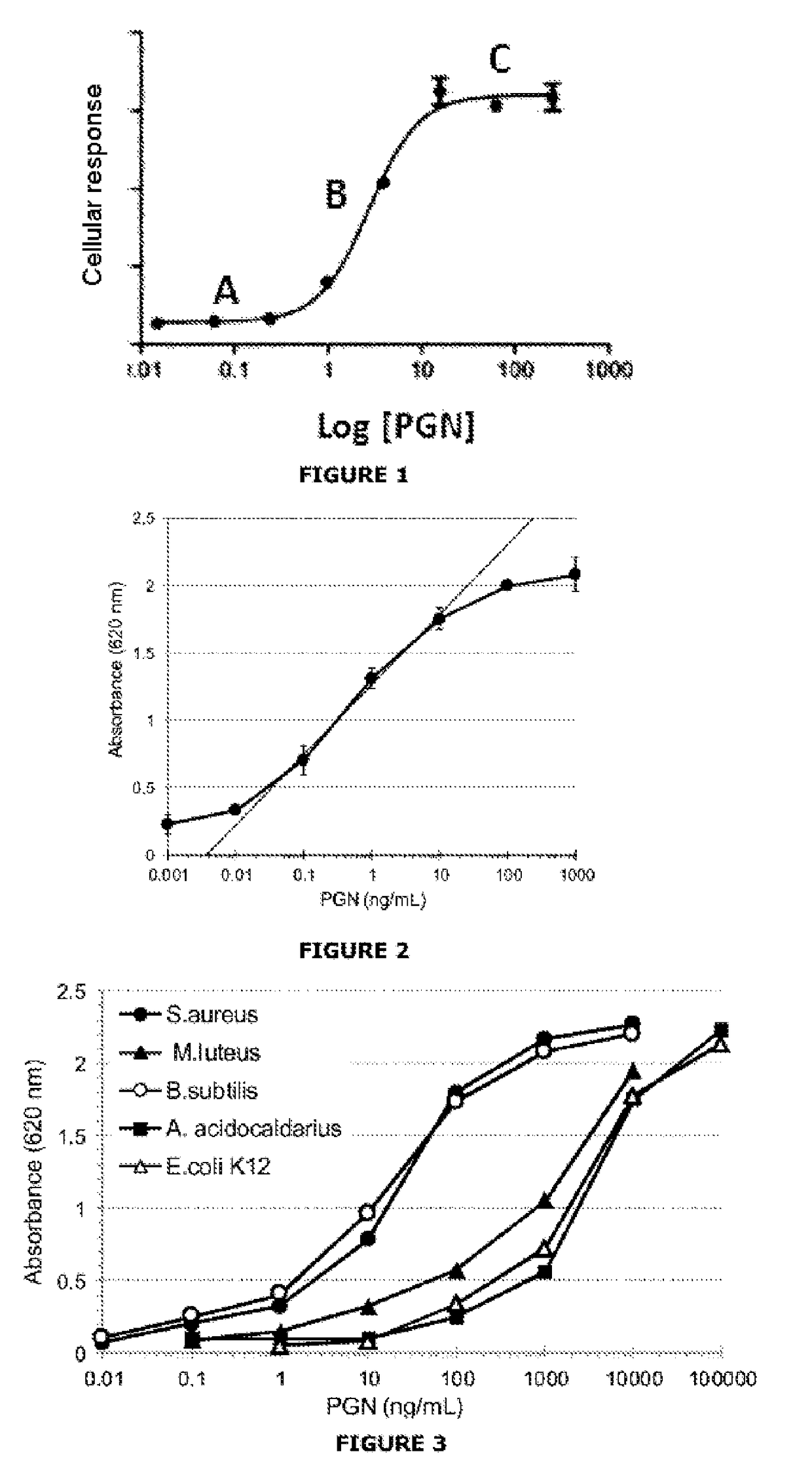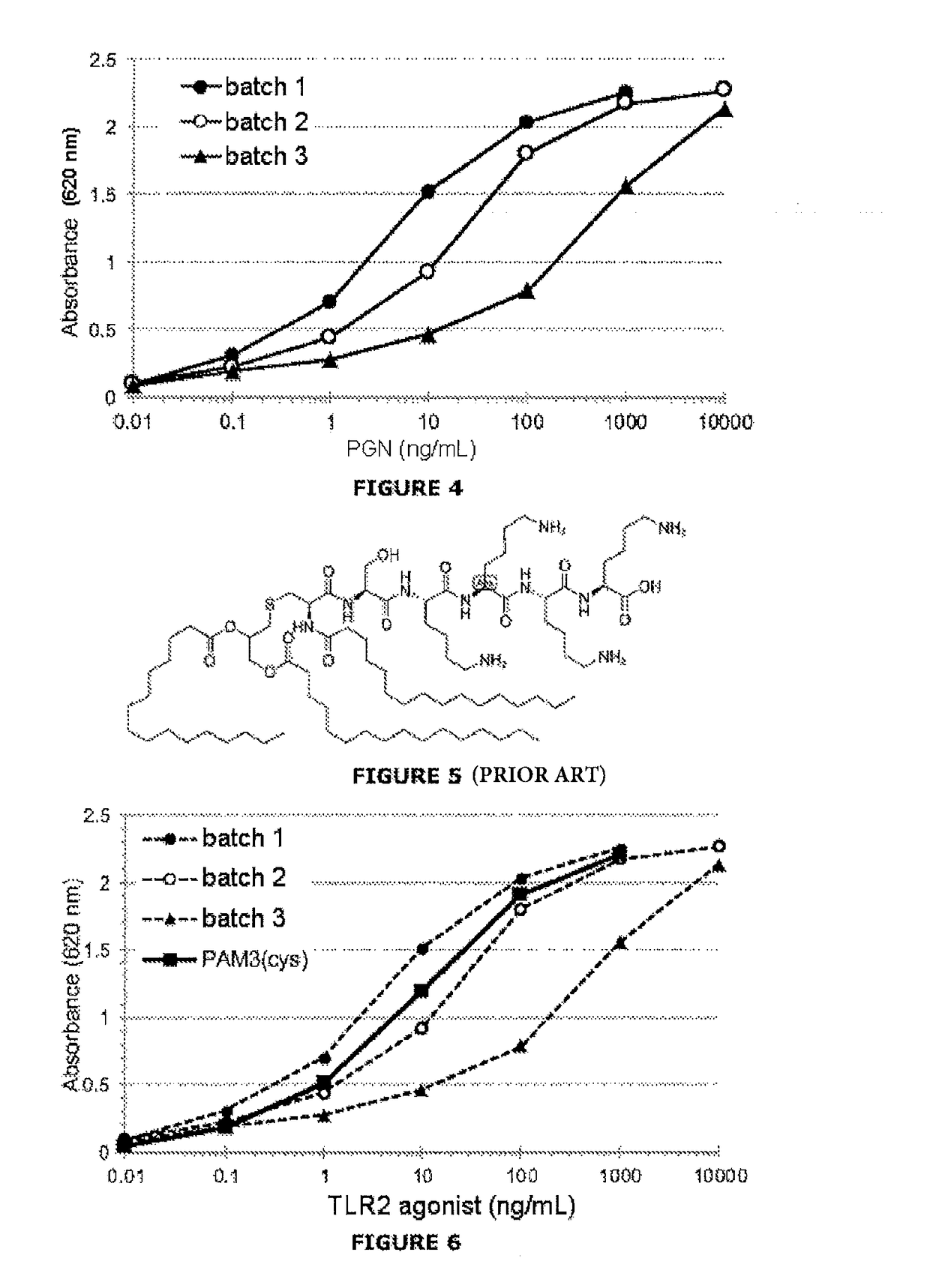Biological assay of peptidoglycans
a biochemical assay and peptidoglycan technology, applied in the field of peptidoglycan assay, can solve the problems of increasing costs, not very specific, and limiting the access to these assay techniques
- Summary
- Abstract
- Description
- Claims
- Application Information
AI Technical Summary
Benefits of technology
Problems solved by technology
Method used
Image
Examples
examples
[0085]The assay is based on the specific recognition of PGNs by a line expressing the TLR2 receptor and on the production of an enzyme activity measurable via activation of the signaling pathway associated with TLR2.
[0086]Cellular Material
[0087]For the experiments relating to this assay, two lines are used:
[0088]HEK-Blue™ hTLR2 line (HEK-TLR2): specific response for the TLR2 ligands, with strong reactivity for the soluble PGNs.
[0089]HEK-Blue™ Null2 line (HEK-Null): nonspecific response connected with a cytotoxic effect of the sample.
[0090]The cells are cultured according to the supplier's recommendations (InvivoGen). At 75% confluence, the cells are resuspended at a density of 0.28×106 cells / mL. Before stimulation, 180 μL of the cellular suspension is distributed in the culture wells (96-well plate), or 50 000 cells / well. The cells are then stimulated for 24 h by adding 20 μL of the samples of glucose polymer at 37.5% (weight / volume) (i.e. a final dilution of the samples at 3.75%). ...
PUM
| Property | Measurement | Unit |
|---|---|---|
| concentration | aaaaa | aaaaa |
| temperature | aaaaa | aaaaa |
| temperature | aaaaa | aaaaa |
Abstract
Description
Claims
Application Information
 Login to View More
Login to View More - R&D
- Intellectual Property
- Life Sciences
- Materials
- Tech Scout
- Unparalleled Data Quality
- Higher Quality Content
- 60% Fewer Hallucinations
Browse by: Latest US Patents, China's latest patents, Technical Efficacy Thesaurus, Application Domain, Technology Topic, Popular Technical Reports.
© 2025 PatSnap. All rights reserved.Legal|Privacy policy|Modern Slavery Act Transparency Statement|Sitemap|About US| Contact US: help@patsnap.com



